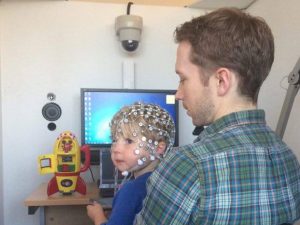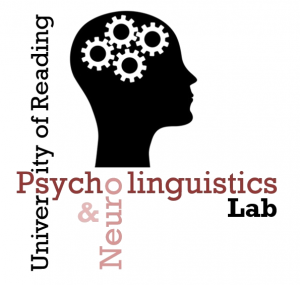 Our research in language development examines the factors that influence successful language acquisition during childhood. Our research in this field also examines how language development may be impaired in different populations of speakers. For example, one recent study investigated artificial grammar learning in children with Williams Syndrome.
Our research in language development examines the factors that influence successful language acquisition during childhood. Our research in this field also examines how language development may be impaired in different populations of speakers. For example, one recent study investigated artificial grammar learning in children with Williams Syndrome.
In close links to our work in Bi-/Multilingualism, much of our work in language development also investigates bilingual and multilingual language acquisition in childhood. This work also has close links to the Centre for Literacy and Multilingualism.
Representative Publications
Pontikas, G., Cunnings, I., & Marinis, T. (2023). Online processing of which questions in bilingual children: Evidence from eye-tracking. Journal of Child Language, 50, 1082-1118.
Wright, E., Stojanovik, V. and Serratrice, L. (2023). Deaf children with spoken language bilingualism: professional guidance to parents. Deafness & Education International, 25, 21-39.
Wright, E., Stojanovik, V. and Serratrice, L. (2023). Spoken language multilingualism in deaf children: parental decision-making. Deafness & Education International, 25, 81-100.
Kašćelan, D., Prévost, P., Serratrice, L., Tuller, L., Unsworth, S., & De Cat, C. (2022). A review of questionnaires quantifying bilingual experience in children: Do they document the same constructs? Bilingualism: Language and Cognition, 25, 29-41.
Cameron‐Faulkner, T. , Malik, N., Steele, C., Coretta, S. , Serratrice, L. and Lieven, E. (2021). A cross‐cultural analysis of early prelinguistic gesture development and its relationship to language development. Child Development, 92, 273-290.
Valentini, A. and Serratrice, L. (2021). What can bilingual children tell us about the developmental relationship between vocabulary and grammar? Cognitive Science, 45, e13062.
Macdonald, R., Brandt, S., Theakston, A., Lieven, E. and Serratrice, L. (2020). The role of animacy in children’s interpretation of relative clauses in English: evidence from sentence-picture matching and eye movements. Cognitive Science, 44, e12879.
Serratrice, L. and De Cat, C. (2020). Individual differences in the production of referential expressions: The effect of language proficiency, language exposure and executive function in bilingual and monolingual children. Bilingualism: Language and Cognition, 23, 371-386.
Vender, M., Krivochen, D., Phillips, B., Saddy, D. and Delfitto, D. (2019). Implicit learning, bilingualism, and dyslexia: insights from a study assessing AGL with a modified Simon task. Frontiers in Psychology, 10, 1647.
Stojanovik, V., Zimmerer, V., Setter, J., Hudson, K., Poyraz-Bilgin, I. and Saddy, D. (2018). Artificial grammar learning in Williams syndrome and in typical development: the role of rules, familiarity and prosodic cues. Applied Psycholinguistics, 39, 327-353.
Herve, C. and Serratrice, L. (2018). The development of determiners in the context of French-English bilingualism: a study of cross-linguistic influence. Journal of Child Language, 45, 767-787.
Marinis, T., Armon-Lotem, S. and Pontikas, G. (2017). Language impairment in bilingual children: state of the art 2017. Linguistic Approaches to Bilingualism, 7, 3-4. 265-276.
Herve, C., Serratrice, L. and Corley, M. (2016). Dislocations in French–English bilingual children: an elicitation study. Bilingualism: Language and Cognition, 19, 987-1000.
Hesketh, A., Serratrice, L. and Ashworth, R. (2016). Encouraging use of subordination in children’s narratives: a classroom-based priming study. Language Learning and Development, 12, 413-428.
Serratrice, L., Hesketh, A. and Ashworth, R. (2015). The use of reported speech in children’s narratives: a priming study. First Language, 35, 68-87.
Abbot-Smith, K. and Serratrice, L. (2015). Word order, referential expression, and case cues to the acquisition of transitive sentences in Italian. Journal of Child Language, 42, 1-31.

